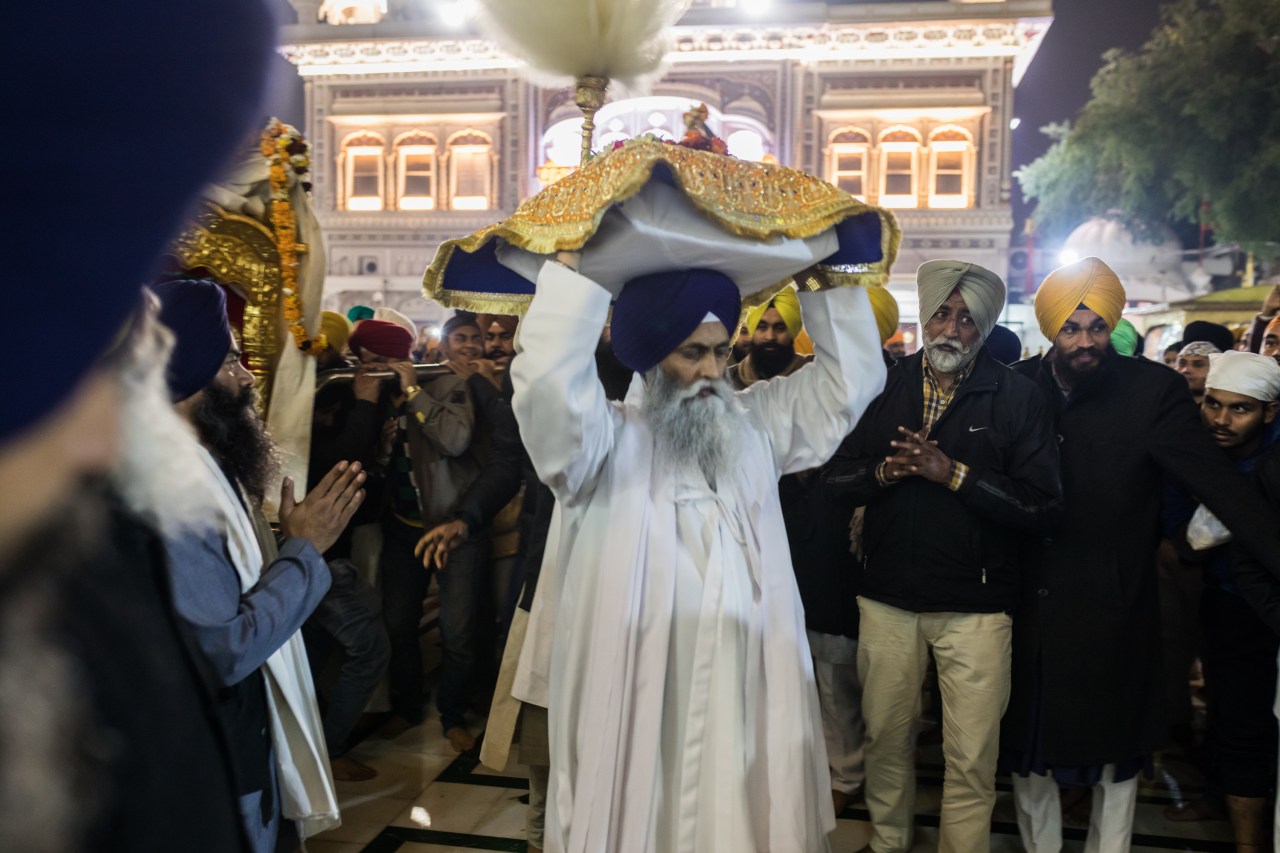The sacred land of turbans and ghee, Amritsar is a city of about a million in the state of Punjab, in northern India. It is situated across the Pakistani border on the Grand Trunk Road, one of Asia’s longest and oldest routes. It connects southern and central Asia, as well as the western and eastern regions of India; it’s also the last stop by train along the plains and the gateway to the Himalayas.
Amritsar is the spiritual center of Sikhism and the Golden Temple. It is a city of pilgrimages, where God and food are equally worshiped and life revolves around eating. Due to the climate, Punjab’s fertile land boasts of wheat, basmati fields, and rivers that grow a wide variety of vegetables and dairy products envied in the rest of the country. This is India’s bread basket. What is popularly known to most parts of the world as Indian food—tandoori cooking and ghee-infused curries—hails from Punjab.
It is often said in Amritsar that the best food is not found in one’s home but on the streets. Each trip back to my ancestral home takes me along the bustling streets in a constant search for the next masala-smothered, heart-clogging chili fix.
Arrive hungry. Indian devotees fast for religious purposes and special festivals. And for your own personal reasons, fasting before a pilgrimage to a famous Amritsari dhaba (roadside restaurant) is still a wise choice. The Punjabi dishes are addictive—you will need to make space to sample as many as you can. Kahna Sweets on Lawrence road offers a morning meal of poori chole or bhature chole—round puffy fried pillows of bread served with a hot and tangy chickpea curry. The chewy dough uses refined flour that is fried to a golden crisp in a giant black wok of bubbling oil. The order arrives in a shiny metal tray that is also packed with pickled onions, carrots and a sweet and sour potato stew called aloo ki launji. There is enough oil to keep one going for the rest of the day.

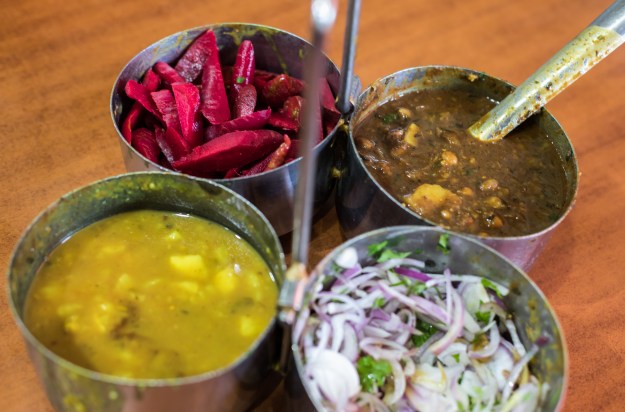
Work off the heavy breakfast by walking through Hall Bazaar in the city center. The quaint stalls will keep one amused with their Old World charm. To understand Amritsar’s history, a trip to the public garden Jallianwala Bagh is a must. The memorial was erected in 1951 by the Indian government to commemorate the massacre of unarmed civilians during the Punjabi New Year (Baisakhi) on April 13, 1919. Brigadier General Dyer of the British Raj was convinced of an insurrection and ordered the massacre of over 1,000 people celebrating peacefully. The macabre paintings might be disturbing to some, but it is remarkable to see the tragedy that Amritsar recovered from.
A few minutes walk from the bagh (garden) is the Sikh’s holiest site and Amritsar’s main attraction, The Golden Temple. Leave your dusty shoes in a locker, cover your hair and cleanse your feet in cool water before entering the marbled-floor temple. The city’s name is derived from the holy pool of nectar that surrounds the Golden Temple. Sikhism, a monotheistic religion, originated in India during the 15th century. The disciples are devoted to religious tolerance, equality, social justice, bravery, and selfless service (seva). For over 300 years their greatest seva has been through a community kitchen built inside the temple’s compound. Guru Nanak, the founder of Sikhism, established the langar (communal kitchen) in the 16th century. He believed the best way to serve people is by sharing and feeding people equally. Each day, volunteers prepare 100,000 free meals for tourists and devotees. The vegetarian meals are nourishing, consisting of a flavorful dal, a vegetable curry, rice, and roti. The aroma and sounds of the meal being prepared and served are mesmerizing.
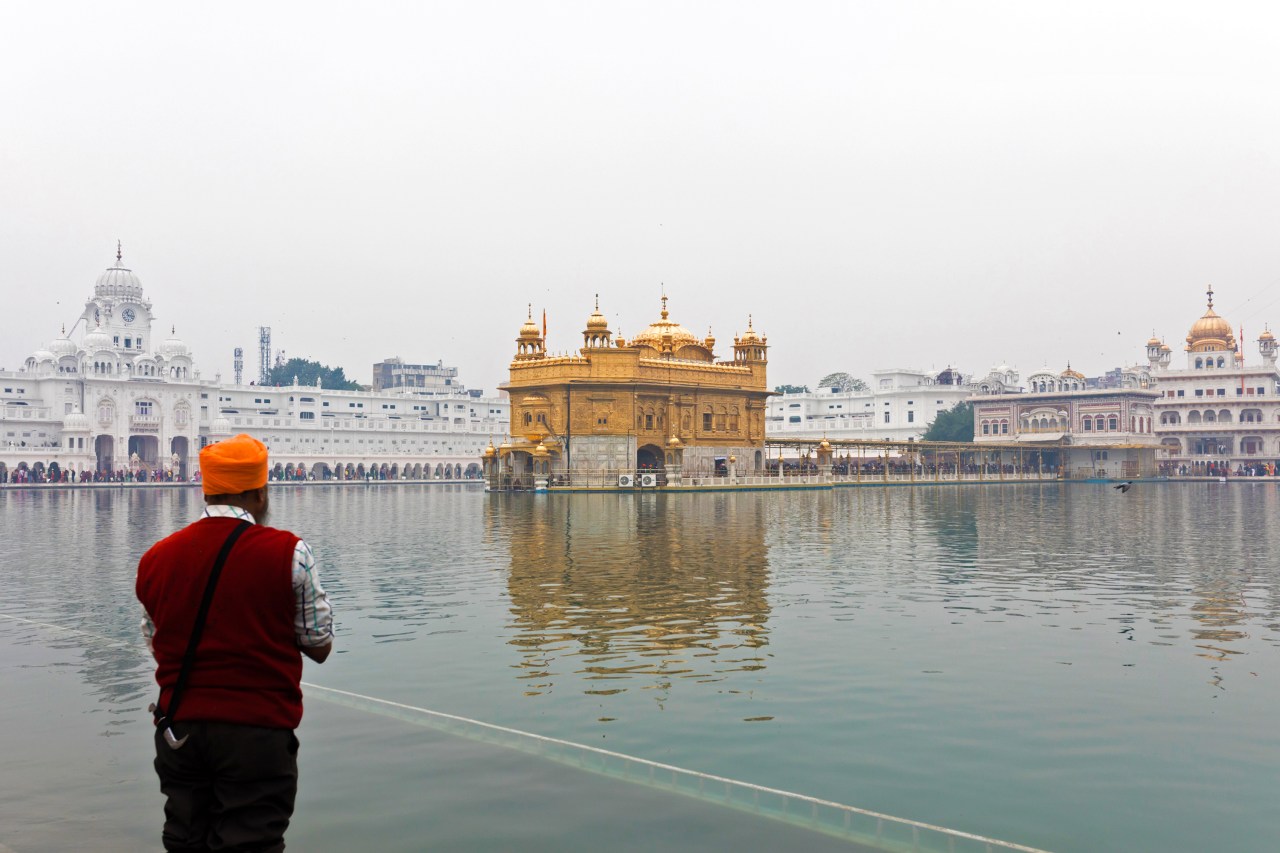
There is no discrimination between gender, caste, religion, or race. If you don’t partake in the free meal, you’re always welcome to help chop vegetables or wash the metal plates. Best to ask the information office outside the temple before volunteering—but no one is turned away.
Look for the narrow winding staircases that lead to the upper floor—the intricate walls and complete view of the compound are worth the short trek. The Golden Temple is not as grand in scale as the Taj Mahal, but it has a unique sense of intimacy and peace.
The locals take their food seriously; Amritsar is a city of specialized cooking where no single restaurant can do it all. One lunch can barely scratch the surface of Amritsar’s famous food stalls. Opt to walk from the Golden Temple to Bharawan Da Dhaba, a local haunt since 1912. Ask for the comforting saag (spinach or sometimes mustard leaves) paired with makki ki roti—unleavened bread made from corn flour that is a Northern Indian winter staple. Farmers consume this in the fields to keep themselves warm and full.
October through March is the best time to travel through Punjab. One can take advantage of the freshest fruits and vegetables, which are harder to find in the rest of India. If you have room for dessert try the milky kheer—rice pudding flavored with dried nuts, raisins, cardamom, and saffron—a testament to the quality of Amritsar’s dairy products and basmati rice.
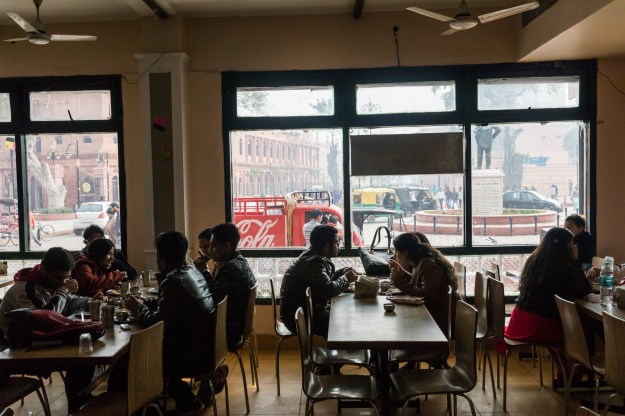
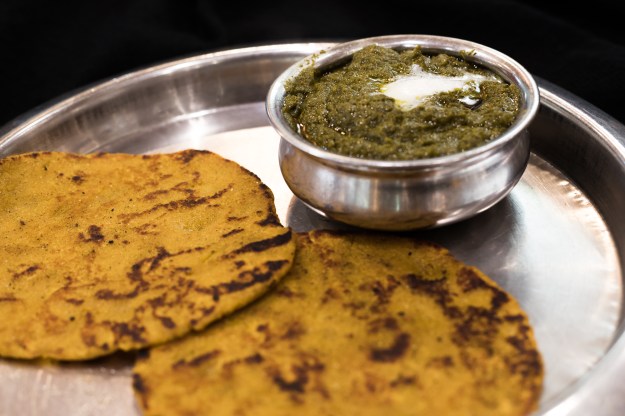
Next, head to Kesar Da Dhaba. Established in 1916, this restaurant was initially located in Sheikhupura, Pakistan. After the hasty and ill-conceived partition in 1947, it relocated to Amritsar. One must brave the trip by foot or rickshaw as it is located in a narrow alley in a busy part of the main bazaar. The 10-minute walk from the last dhaba might do you good. Order the Punjabi Thali, which comes with two parathas, chole (a chickpea curry), and the legendary dal makhani (lentils in butter), a raita, and salad. The secret recipes have not changed for a century. Ideally, they are downed with a cold and refreshing glass of lassi (buttermilk). The flavors, colors, and spices are intense and addictive.
Don’t be alarmed by the waiter crumpling your parathas with his bare hands as he places your metal plate on the table. It’s the local way of proving the bread was smothered in pure desi ghee (locally made clarified butter). Traditional ghee recipes use boiled raw milk. It is cooled to room temperature for at least 12 hours before yogurt is added and left to stand overnight. Those that want to make the butter cultured then churn it with water. The butter is simmered and is complete after the fat has separated from the milk solids and the water has evaporated. Simmering gives the ghee its nutty flavor.
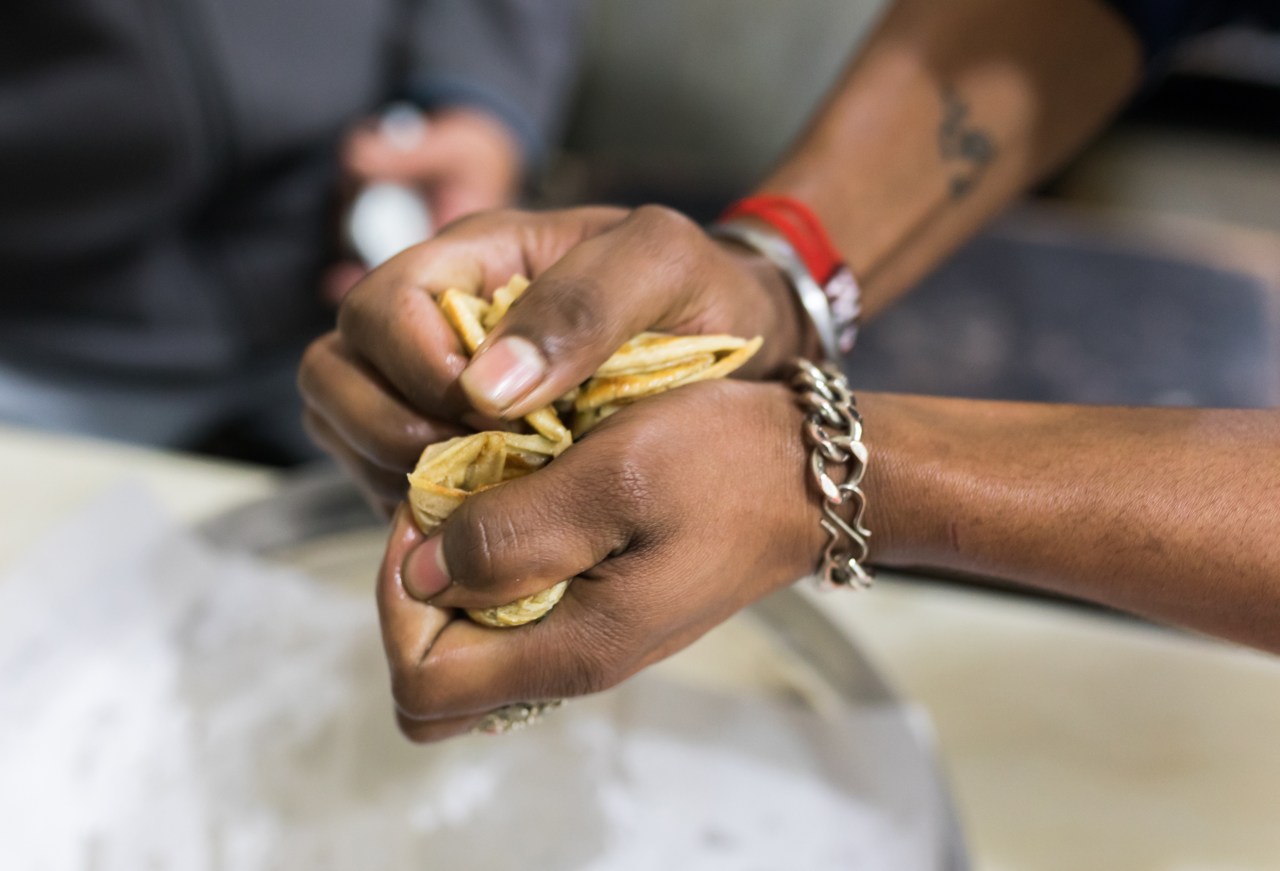
No trip to Amritsar is complete without trying its famous kulchas. Compared to the whole wheat paratha, a kulcha uses a processed flour called maida and it’s stuffed with fiery potatoes, grated cauliflower or crumbled paneer (Indian cottage cheese). It is rolled into a flat round shape and baked in a tandoor until brown, similar to a stuffed naan. It is then smothered in clarified butter and paired with a spiced chole, and a mint-tamarind chutney.
Take an auto rickshaw or tuktuk to the All India Famous Amritsari Kulcha more popularly known as “the kulcha shop on Maqbool Road”. The best places never have a proper address. The shack has a few plastic chairs along the road. It will not be the best contender for a sanitation award, but you can watch the kulcha-making process in all its glory. The kulcha flavor bombs are crisp on the outside with a gloriously soft, moist middle. Perhaps it is the dusty road and fumes that add to the rich flavor. The portions are big, so remember to share.
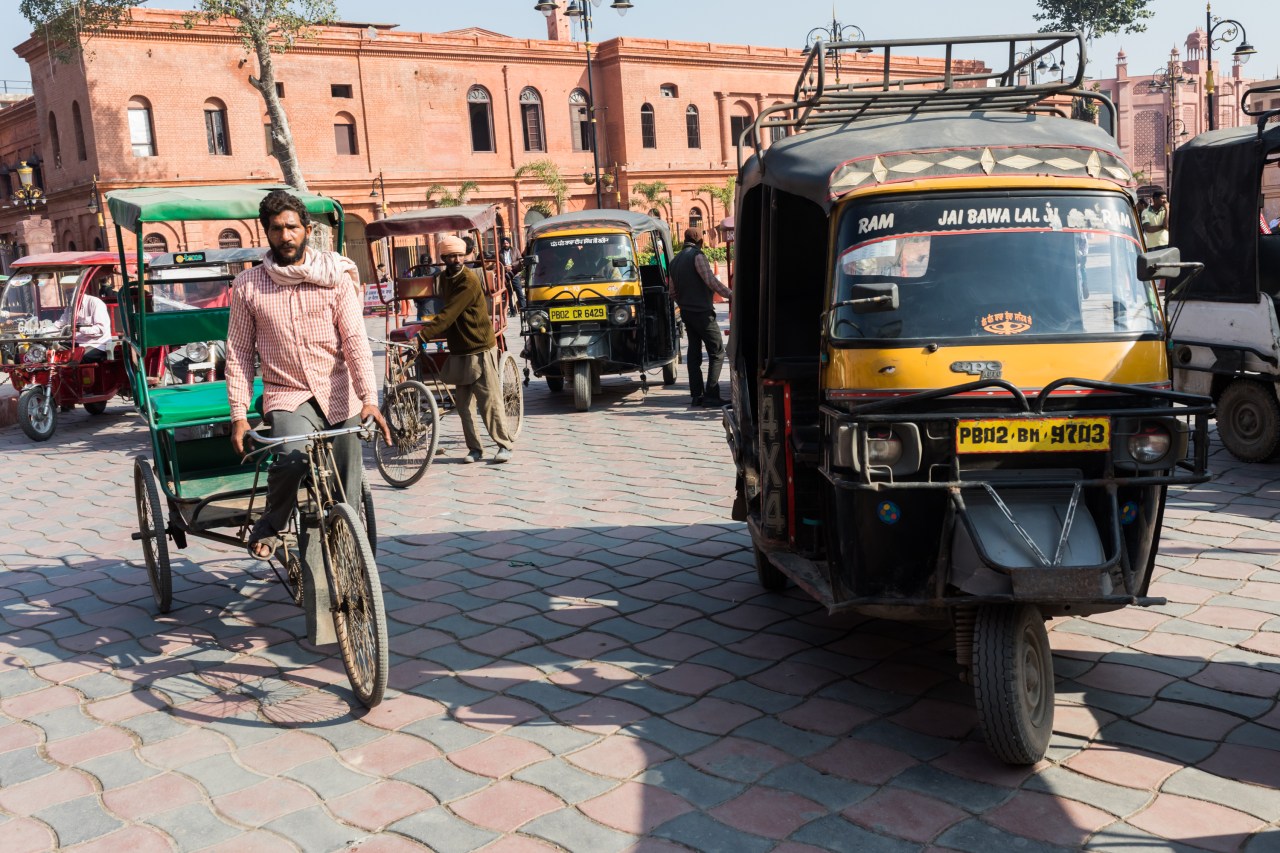
Arrange for a taxi to the Wagah Border Ceremony. Say a prayer before you get in; the fatalistic driving is not something you’re likely to get used to. Travel light as you are asked to leave bags at roadside lockers for security purposes. A pair of sunglasses, a camera phone, and wallet should do. The border to Pakistan is approximately 22 miles away via the Grand Trunk Road. A running joke in Amritsar is that in the case of a war between the two rivals, the city will be the first to be bombed—not all that funny.
Flags are lowered on both sides of the border in an elaborate and colorful ceremony before sunset. Pakistani Rangers and India’s Border Security dressed in crisp uniforms parade up and down in rapid, almost cartoon-like movements. Their high kicks are phenomenal.
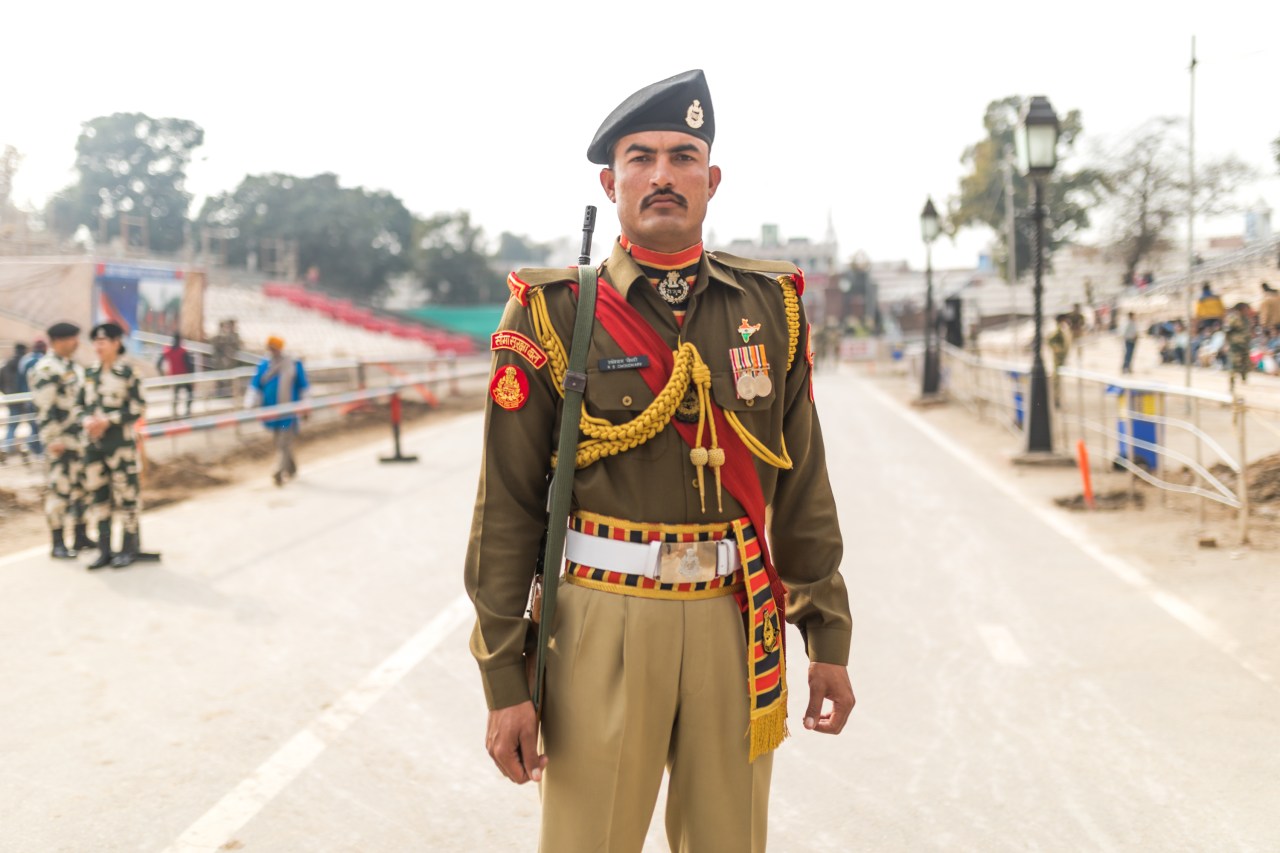
6:00pm
A relaxing beer is in order after this strenuous eating tour and the border ceremony. Pick any roadside dhaba and order a Kingfisher. Because you can. There’s a satisfying feeling to drinking when you know you’re a stone’s throw away from a country that bans the consumption of alcohol in all public places.
“Veg or non-veg?” is the standard question asked at restaurants throughout India. Indian religions promote vegetarianism as a sign of respect to all living beings. After being good all day, meat is in order. To party Amritsar-style, keep your taxi through dinner. Getting around the city after sunset might be tough without your own car. A tuk-tuk is a cheaper option if you are traveling on a budget. Bring your own bottle of booze—the Old Monk XXX Rum—and park outside Beera’s on Majitha Road. Thankfully, liquor shops and meat-serving dhabas are always next to each other. Honk for service, which is like an American drive-through.
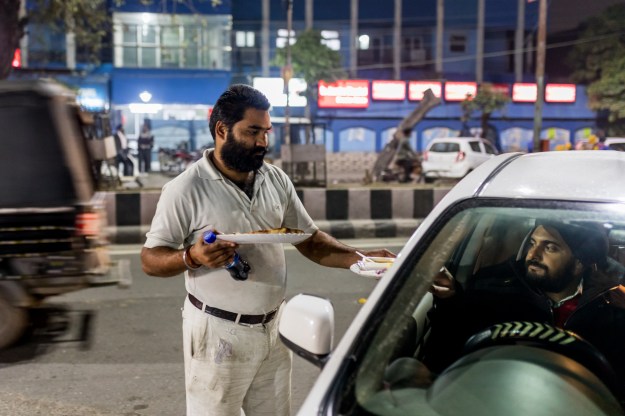
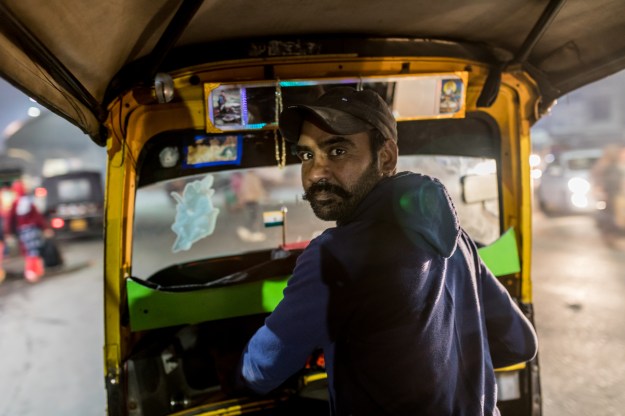
The keema (minced mutton) naan hot off the tandoor, rubbed with glorious ghee, is a popular choice. Beera’s is known in Amritsar for the best barbecue chicken. Marinated in yogurt with a blend of aromatic spices, it lacks the run-of-the-mill bright red food coloring mixed into most tandoori chicken marinades across India. This is Punjabi chicken at its best. The succulent kebabs and tikkas are another, equally delicious, story. The customers throw their leftover chicken bones from car windows—don’t fuss over the wolf-like dogs being fed like kings.
On the same road, the pungent smell of mustard oil will make your eyes tear. At the Makhan Fish Shop, the large black pot (kadhai) is charred from years of use. The popping sound of fish being thrown into the caldron is mesmerizing. They specialize in Amritsari machi (fish). The sole is sourced fresh from the Beas and Harike rivers. Thanks to the renowned sweet water of Amritsar, the fleshy fish is tasty and light. It is marinated in various spices and coated with a besan (chickpea flour) batter. Pair it with a refreshing mint and coriander chutney.
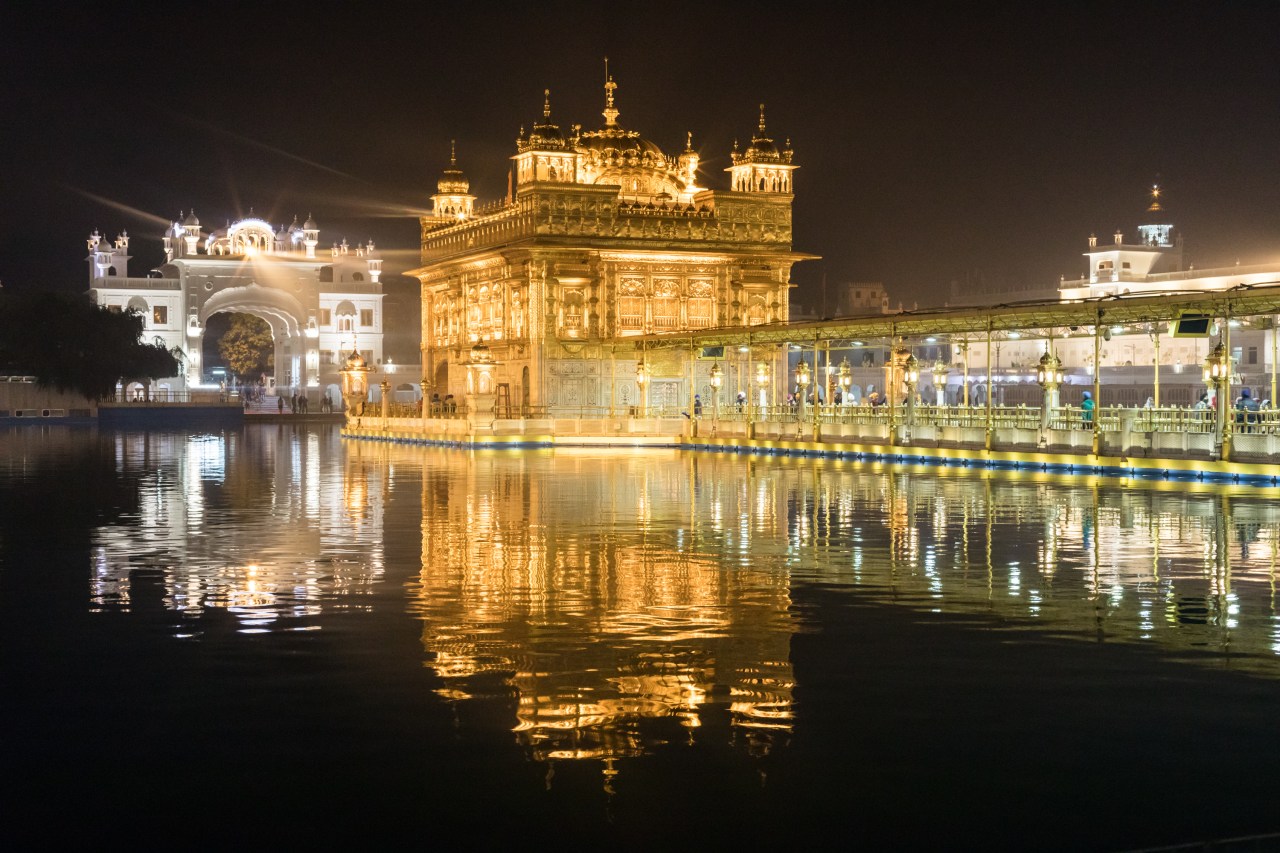
Return to the Golden Temple at night. The soothing reflection of the moon shining on the pool against the backdrop of the golden dome can be a religious experience even for nonbelievers. A night ceremony, called the Palki Sahib, is held daily at 9 p.m. The holy book of the Sikhs is carried from the main temple on an ornate palanquin in an elaborate and symbolic ritual. It is brought across to a building called the Akal Takht (Throne of the Immortal) for safe keeping. The establishment serves as a meeting place for Sikhs to discuss their political and spiritual concerns.
Devotional hymns are sung as devotees spend an hour cleaning The Golden Temple. The holy book is returned to the main temple in the early hours of the morning.
The Golden Temple is one of the most welcoming places in India. It not only offers a free meal to its visitors but a place to sleep as well. Communal dormitories are built around the premises. Not everyone may have the courage to give up the comforts of a hotel bed, but it provides basic shelter to a person in need.
Whatever the reason for your pilgrimage, whether it’s to nourish your spirit in the Golden Temple and Community Kitchen, or through the delicious dishes served on its streets, there is no city like Amritsar. You may leave a few pounds heavier, but that is the ultimate Punjabi compliment.
